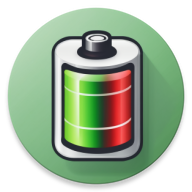Have you noticed that after using your smartphone for some time, the battery life seems to get shorter and shorter? The underlying reason may be linked to battery cycle count. As a key indicator of battery health, the cycle count not only affects battery life but also determines the overall lifespan of the battery. This article will explain in detail what the battery cycle count is, how to check it using "battery cycle monitoring methods," and share practical tips to extend your battery's cycle life. Let's uncover the secrets of battery cycles step by step and help you better manage your phone's battery!
What Is Battery Cycle Count?
The battery cycle count refers to the process of your phone's battery completing one full charge and discharge cycle. In simple terms, charging from 0% to 100% and then discharging back to 0% counts as one cycle. However, in real-life usage, charging habits tend to be fragmented. For example, charging from 20% to 80% only counts as 0.6 of a cycle. The cycle count only increases once the total equals one complete charging cycle.
Why does this matter? Most smartphone batteries are lithium-ion batteries, which typically have a design lifespan of 500–1000 cycles. As the cycle count increases, the chemical materials inside the battery gradually degrade, reducing the battery's capacity and shortening its battery life. Understanding the concept of battery cycle count helps you better assess your battery's "health status" and lays the foundation for extending its cycle life.
How to Check Battery Cycle Count
The methods for checking your battery cycle count vary depending on the device. Here are some commonly used approaches:
For iPhone Users
- Open Settings → Battery → Battery Health & Charging, where you can see the "Maximum Capacity."
- Although iOS doesn't directly display the cycle count, you can access detailed data through the Analytics & Improvements section by analyzing the battery logs.
- Alternatively, connect your iPhone to a computer and use third-party tools like iMazing to get an accurate battery cycle count.
For Android Users
- Most Android devices don't have a built-in display for cycle counts, but you can try entering codes like *#*#4636#*#* in the dialer to access battery information (this depends on the specific model).
- A simpler method is to download apps like EasyBattery, which can directly show your battery's cycle count.
For Other Devices
- For tablets or laptops, certain brands (e.g., Samsung, Huawei) provide official apps for battery diagnostics. Third-party software can also assist in monitoring cycle counts.
By using these "battery cycle monitoring methods," you can easily track your battery's usage status and decide whether it's time to adjust your charging habits.
How Battery Cycle Count Affects Your Phone
The battery cycle count is directly related to the battery's cycle life. Generally:
- 0–300 Cycles: The battery is in its optimal state, with capacity close to new and excellent battery life.
- 300–500 Cycles: Aging begins, with capacity potentially dropping by 10–20%, and battery life starting to shorten.
- Over 500 Cycles: Battery performance degrades noticeably, with capacity potentially falling below 70%, faster power drain, and possible impacts on phone performance.
- Over 700 Cycles: Severe battery health decline, with significantly reduced battery life, and battery replacement may be necessary.
For example, a phone that consumes 50% of its battery each day will complete one cycle every two days, leading to roughly 180 cycles a year. After two years, the cycle count may approach 400, and you may notice more frequent charging requirements. This is why understanding your battery cycle count is crucial—it can signal when your battery is nearing the end of its lifespan.
How to Extend Battery Cycle Life
The good news is that you can effectively extend your "battery cycle life" and slow down the accumulation of cycle counts with a few simple habits:
1. Optimize Charging Habits
- Avoid frequently charging the battery to 100% or draining it to 0%.
- The ideal charging range is 20%–80%, which minimizes the occurrence of full cycles. For example, charging from 30% to 80% only counts as 0.5 of a cycle, which is gentler on the battery than charging to full capacity.
2. Use Proper Charging Equipment
- Use original or certified chargers to ensure stable current and avoid overheating or overvoltage that could damage the battery.
- Low-quality chargers may accelerate the accumulation of cycle counts.
3. Avoid Extreme Environments
- High temperatures (e.g., charging while gaming) and low temperatures both accelerate battery aging.
- Try to use your phone in environments between 15°C–35°C (59°F–95°F) to prolong the battery's cycle life.
4. Enable Power-Saving Mode
- Many phones offer low-power modes, which reduce background power consumption and indirectly lower the frequency of cycle usage.
By regularly using "battery cycle monitoring methods" to check your battery's condition and adopting these strategies, you can make your battery last longer.
Monitor Your Battery Cycles with EasyBattery
Track your battery cycle count, get personalized optimization tips, and extend your device's battery lifespan.
Download EasyBatteryConclusion
The battery cycle count is a vital metric for measuring your phone battery's lifespan. Understanding its meaning and how to check it allows you to better monitor battery health. By optimizing charging habits, using proper accessories, and avoiding extreme environments, you can effectively extend your "battery cycle life" and ensure your phone stays with you for longer. Try out the "battery cycle monitoring methods" today and see how many cycles your battery has gone through! Small changes can make a big difference in extending battery life.
